Road Hazards That Cause Car Accidents
When people think about the dangers of driving, they often think about reckless or careless drivers who fail to take their responsibility behind the wheel seriously. However, fewer consider how roadway hazards such as unsecured construction materials, unexpected animals on the road, and a lack of proper signage can come into play in a car accident. In fact, road hazards are a significant contributor to car wrecks nationwide.
According to a report released by the National Highway Traffic Safety Administration (NHTSA), factors such as road design, traffic signage, vision obstruction, and slick roads caused by poor weather conditions were responsible for 52,000 accidents in the U.S.
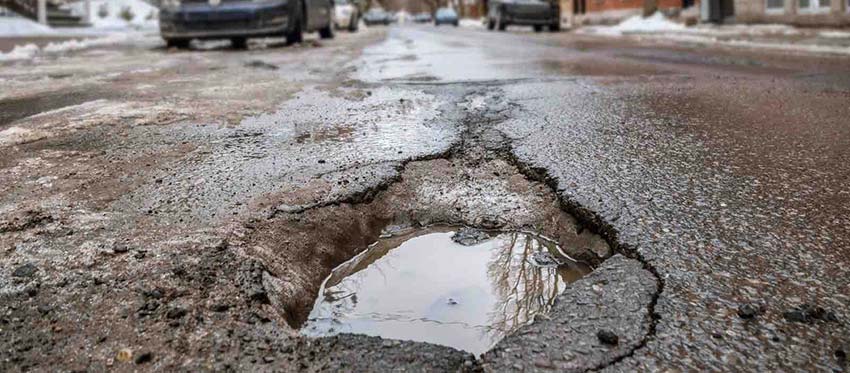
If you are involved in a car accident caused by a road hazard or vehicle defect, it might seem like no one is to blame. However, while liability can be complicated to figure out in these cases, an experienced car wreck attorney can investigate the accident to determine who should be held responsible for the accident and any resulting damages.
Car Accident Lawyers
888-987-0005
At Miller Weisbrod Olesky, our car accident lawyers know how destructive roadway hazards can be for drivers, which is why we are committed to exploring all legal remedies available to our clients after a road hazard accident and aggressively fighting for the compensation they deserve.
Our team of experienced car wreck attorneys is led by Clay Miller, a Board-Certified Personal Injury Trial Law Specialist. Due to the rigorous jury trial and testing requirements, this is a distinction achieved by less than 2% of all Texas attorneys.
We offer free, initial case reviews to all prospective clients and NEVER charge any attorneys’ fees or costs unless/until we successfully secure a favorable settlement or verdict on your behalf.
What Are Road Hazard Accidents?

Driving can be a relatively simple task when road conditions are adequate and drivers follow the law. Unfortunately, even when drivers exercise caution behind the wheel, it's hard to avoid certain hazardous conditions on the road. Car accidents caused by road hazards occur when an unexpected obstacle or risky road conditions lead to a car wreck and cause injury or damage.
Here's a look at the many different examples of road hazards that can result in car accidents:
Weather Conditions

Extreme weather conditions like heavy rain, thunderstorms, snow, fog, ice, sleet, and high winds can make driving a challenge and significantly increase the risk of accidents. Nearly 60,000 crashes are caused by poor weather conditions in Texas each year. More than 85% of these weather-related accidents happen while it's raining.
Examples of how poor weather conditions can lead to car accidents include:
- Heavy rain can cause a driver to hydroplane on a wet road surface and lose control of their vehicle.
- Snowy or icy conditions can reduce traction between a vehicle's tires and the road surface. This loss of traction can make it difficult for the driver to steer or stop, causing the car to skid or spin out of control.
- Dense fog can severely impair visibility, making it difficult for drivers to see the road surface, other vehicles, and traffic signals. This can cause drivers to misjudge how far away things are or how fast they're going, leading to accidents like rear-end or head-on car accidents.
- High winds can push a vehicle off course, making it difficult for the driver to maintain control. A sudden gust of wind might suddenly push a truck or an SUV into an adjacent lane, causing it to sideswipe another vehicle or even run off the road.
The best approach to preventing these types of accidents is to be mindful of slippery roads and adjust your driving behavior by slowing down or exercising caution when making turns. You can also mitigate the risk of being involved in a weather-related accident by increasing your following distance, turning on your headlights, and paying close attention to the road, and allowing enough time to reach your destination.
If a driver chooses to operate a vehicle during inclement weather, they are expected to take extra precautions to avoid accidents. A driver may be found responsible for causing a car accident if they were engaging in risky behaviors, such as driving too fast on snow-covered roads, failing to turn on headlights during fog, and ignoring warning signs about flooded roads. Additionally, a government entity or municipality may be liable for a car wreck caused by poor weather conditions if it failed to properly maintain the safety of public roads.
The Federal Motor Carrier Safety Administration (FMCSA) recommends that drivers should reduce their speed by 1/3 on wet roads and by 1/2 or more on snow packed roads to decrease the chances of losing control of their vehicles.
Consult a reputable car accident attorney if you were involved in an accident caused or contributed to by bad weather. Your lawyer will examine the details of your case and help you understand your rights and options for recovering compensation.
Road Conditions
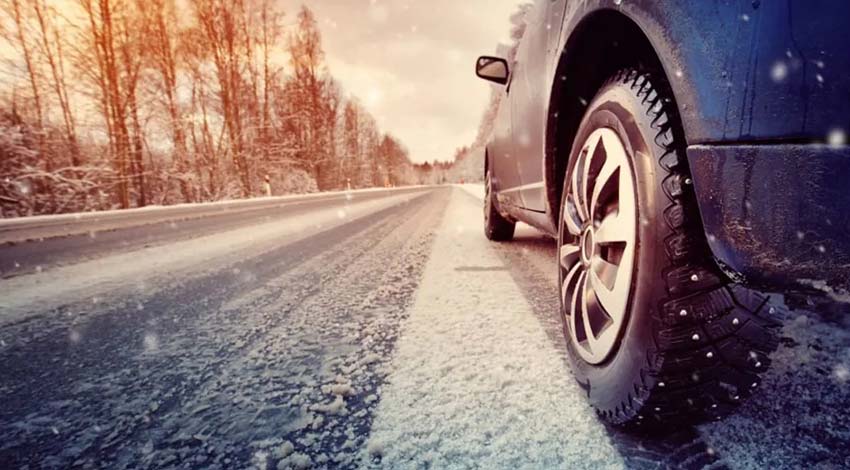
Roadway design and maintenance issues can play a significant role in serious car accidents. Poor road maintenance can lead to issues like cracked pavement, uneven surfaces, potholes, shoulder drop-offs, broken guardrails, and lack of lane dividers. Failing to point out design flaws on the highway, such as steep drop-offs, dips, slopes, and dangerous lane markings with warning signs, can cause accidents and be considered negligence in a car accident lawsuit.
Some examples of scenarios where badly designed, or poorly maintained roads can lead to motor vehicle accidents include:
- A driver loses control of their vehicle as it crosses onto a shoulder that is significantly lower than the principal road surface. One possible outcome of a shoulder drop-off accident is collisions with other cars or objects in the vicinity. These accidents are often caused by poor road maintenance or construction errors, such as inadequate grading or failure to repair erosion.
- A driver swerves to attempt to avoid a pothole and causes a loss of control car accident. Periods of extreme weather, overuse on unmaintained roads, and improper construction often cause the formation of potholes on road surfaces. The impact from hitting a pothole can lead to tire blowouts, bent rims, and damage to the vehicle's suspension system.
- A driver navigating a sharp, unmarked curve at night veers off the road. These dangerous curves can result from negligence in road design, lack of proper signage, or inadequate lighting. Car accidents caused by sharp or unmarked curves can lead to rollovers, head-on collisions with oncoming traffic, or vehicles crashing into roadside obstacles.
- A driver experiences a tire blowout after hitting an unexpected patch of uneven pavement. Uneven pavement is one of the most common roadway defects that impairs a driver's ability to safely operate their vehicle. This dangerous road defect can lead to serious accidents, including rollovers, collisions with other vehicles or roadside barriers.
Most roadway defects result from normal wear and tear. Unfortunately, the longer these issues go unfixed, the worse the problem becomes. It is the responsibility of local government and municipal agencies to repair these issues promptly and ensure roads are designed in a way that promotes safe, accident-free driving.
If you were seriously injured or lost a loved one in a car accident caused by a roadway defect, an experienced car accident attorney can help you pursue compensation from a municipal entity that neglected their duty to maintain or build safe roads.
Vehicle Defects
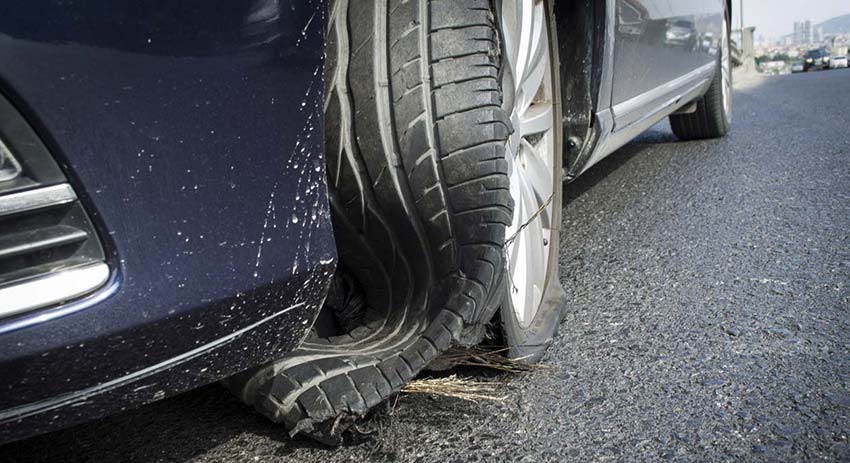
Some accidents are caused by a malfunctioning or defective parts. These accidents typically occur due to a flaw in the manufacturing or design of the vehicle's engine, brakes, tires, transmission, and steering.
A study conducted by the National Motor Vehicle Crash Causation Survey (NMVCC) from 2005 to 2007 found that about 2% of car accidents were associated with vehicle defects. 35% of these accidents were caused by tire problems, 22% by brake defects, and 43% by other malfunctioning parts.
The following are examples of how vehicle defects can lead to car wrecks:
- A driver traveling on a busy highway fails to stop in time due to a defect in the brake system and rear-ends another vehicle.
- A driver loses control of their vehicle and crashes into an oncoming car after experiencing a sudden and violent tire blowout.
- A driver skids off the road into a guardrail due to a defect in the power steering system.
- A defect in the engine fuel system causes a vehicle to come to a stop in the middle of the fast lane, resulting in a multi-car-pile-up.
If you or a loved one sustained serious injuries in a car wreck caused by a vehicle flaw, call the car accident lawyers at Miller Wesibrod Olesky. We can help you file a vehicle defect lawsuit against the automobile maker or designer.
Obstruction and debris
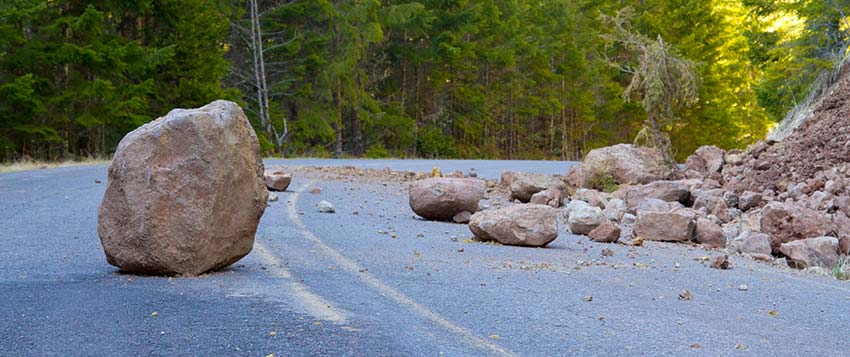
Debris on the road can be anything that falls out of a vehicle or blows onto the road. Obstructions or debris on the road, such as fallen trees, rocks, trash, animal carcasses, car parts, construction material, or unsecured cargo, should be cleared promptly. One of the most common sources of roadway debris is improperly secured cargo, and the person or entity responsible for loading the cargo may be liable for a car accident caused by the debris that falls off the truck.
Additionally, if debris is left on the road for an extended period and causes an accident, government or municipal authorities may also be liable for not maintaining safe road conditions. Hitting road debris can result in punctured or flat tires, broken windshields, and damage to the vehicle's undercarriage. Not only can foreign objects directly impact the vehicle, but they can also cause drivers to attempt to swerve to avoid the debris, resulting in a dangerous collision with other vehicles or even a roadside structure.
In fact, according to a study released by the AAA Foundation for Traffic Safety, approximately 4 in 10 car accidents related to debris on the roadway are caused by a driver swerving to avoid the obstruction. To help prevent accidents caused by road debris, drivers should avoid tailgating and refrain from speeding.
Poor Lighting
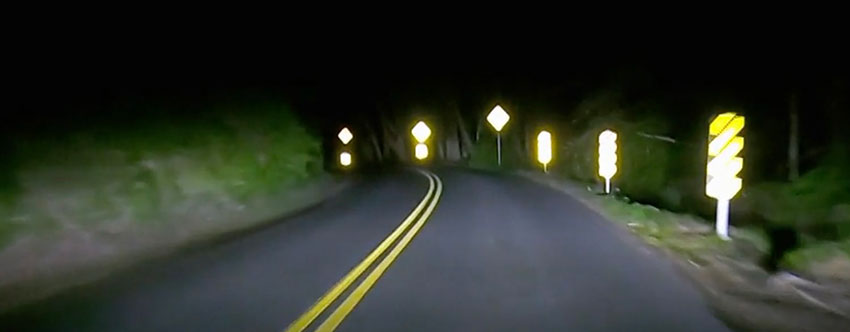
A fundamental aspect of safety on roads is proper lighting. Poorly lit roads and highways can decrease visibility and subsequently increase the risk of accidents. Without adequate lighting, it can become more difficult for drivers to see other vehicles, pedestrians, road signs, and obstacles while driving at night.
In fact, according to a report published by the National Highway Traffic Safety Administration (NHTSA), the most dangerous time to be on the road is between 6:00 pm and 8:59 pm. During this three-hour time block, approximately 6,523 people nationwide lost their lives in 2022.
Additionally, a lack of proper lighting can make it difficult for drivers to see speed limit, stop, and yield signs. If a driver is having difficultly seeing what’s around them and fails to notice a sign that warns them to slow in hazardous areas with sharp turns, intersections, or where wildlife crossing is common, they may be more likely to cause a car accident.
When driving in low light conditions, slow down to avoid potential hazards. You should also ensure headlights, vehicle lights, black lights, and turn signals function properly.
Establishing liability in cases involving poorly lit roadways can be difficult. Typically, liability for poor lighting accidents lies with the party or parties responsible for roadway maintenance and safety.
In Texas, this could include the manufacturer of defective traffic light equipment, contractors responsible for installation or repair, and the cities or counties that handle maintenance.
Depending on the precise details of your case, another driver can also be held liable for an accident caused by poor lighting if it is determined that they were not exercising reasonable care under the circumstances.
Traffic Signage and Signals

Missing or obscured road signs and/or paint can confuse drivers and contribute to serious car wrecks. Road signs and paint are instrumental for providing much-needed direction for motorists and maintaining a steady flow of traffic. When common traffic signs like speed limit, stop, yield, or crosswalk signs are obscured or misleading, drivers can miss crucial instructions and fail to anticipate upcoming hazards.
Common examples of issues that may arise as a result of missing or improperly maintained road signs or paint include:
- A driver may unintentionally drift into another lane at night or during heavy rain due to being unable to see severely faded lane markings.
- A driver who enters a roundabout with a missing yield sign may mistakenly believe they can enter the intersection without yielding to other vehicles.
- A driver may misjudge lane positions and cause a sideswipe accident if lane markers or signs are missing or difficult to see.
- A driver may take a wrong turn or make a sudden lane change and rear-end another vehicle if directional signals are missing.
- A driver may fail to reduce their speed or change lanes in time if there are no warning signs on a road undergoing repair.
Should car accidents occur due to a lack of proper or visible signage and road paint, injured motorists may be entitled to pursue compensation from a negligent government agency that failed to install or maintain the road signs. If you have been injured in a crash caused by dangerous roadways, consult an experienced car accident attorney who can assist you in filing a claim and recovering the compensation you need to move forward.
Construction Zones
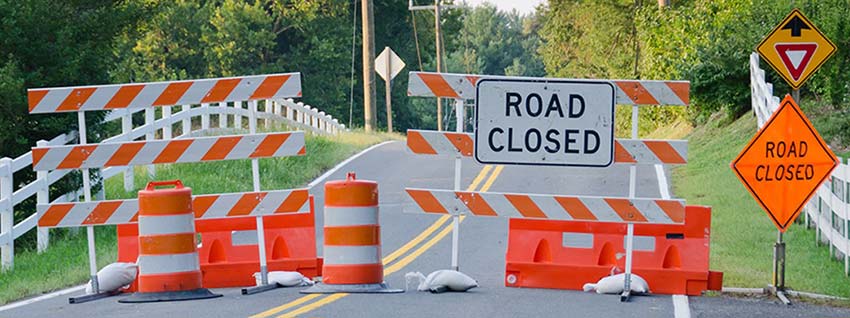
Construction zones can alter traffic and cause temporary changes that confuse drivers, create hazards, and increase the likelihood of accidents. In Texas, about 26,000 people each year are involved in car accidents in construction zones, resulting in more than 800 injuries and nearly 200 fatalities.
For example, if a work crew leaves debris sitting on the road, such as loose gravel, it can cause a driver to swerve unexpectedly to avoid it, potentially leading to a collision with another vehicle or roadside object. Additionally, a lack of clear signage to warn drivers of work-related hazards ahead can cause them to panic and make sudden, unsafe maneuvers like quick lane changes and abrupt stops.
Construction companies who fail to provide adequate signage or safe passage through a work zone are typically held liable in these cases. However, there are situations where accidents in work zones occur due to faulty road designs. In these cases, the government agencies responsible for designing and maintaining the road may be found responsible.
Due to the potential involvement of multiple at-fault parties, determining liability in work zone accident cases can be complex. For instance, if you break abruptly to avoid hitting building material improperly left behind by a construction worker and are struck from behind by a speeding driver, you might have grounds to seek compensation from the construction company and the at-fault driver's insurance company.
After an accident in a construction zone, you should contact a car accident lawyer who can investigate the roles various parties may have played in causing the hazardous conditions that led to the car wreck.
All of the above factors can make it extremely difficult for drivers, bicyclists, motorcyclists, and pedestrians to navigate the road safely and respond effectively to changing conditions. If you or a loved one was involved in a car accident and you believe a road hazard contributed to the incident, our skilled and compassionate car wreck lawyers can investigate the details of the accident, gather evidence, and identify all responsible parties.
Proving a Road Hazard Car Accident
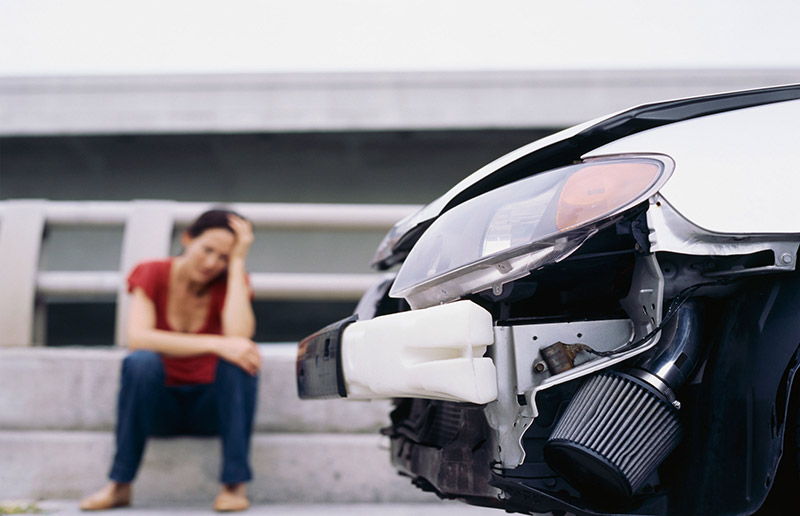
In car accident cases caused by road hazards, there are numerous types of evidence your lawyer can gather to build a compelling case on your behalf. The types of evidence your car accident attorney will collect will depend on the nature of the hazard relevant to your case and the circumstances of the accident.
To establish liability in a road hazard accident claim, this evidence must demonstrate clear proof of a hazard being present at the time of the accident and show that the responsible party (government agency, road maintenance company, vehicle manufacturer, etc.) failed to address and promptly to the hazard.
The following are examples of the common types of evidence used in road hazard accident cases:
- Pictures or videos of the accident scene
- Surveillance or traffic camera footage
- Original roadway blueprints
- Maintenance records for traffic lights and/or signage
- Witness statements
- Skidmark analysis reports
- Commercial vehicle cargo logs and securement records
- Documentation or photographs showing missing or obscured traffic signs or signals
- A copy of the police accident report
- Traffic signal timing data
- Testimony from accident reconstruction experts
- Government records of operation and roadway maintenance schedules
- Previously filed complaints about the same road hazard
- Measurements and diagrams of the accident scene
- Road construction plan and schedules
- Weather reports showing conditions at the time of the accident
Sufficient evidence in car accident cases involving road hazards is crucial, and it is essential to collect this evidence before it is altered or destroyed. If you fail to act quickly, you could potentially jeopardize your ability to effectively support your claim. Increase your chances of securing the compensation you deserve by working with a car accident lawyer who will thoroughly examine all aspects of the accident, including any contributing factors, and collaborate with experts who can provide in-depth testimony to strengthen your case.
At-Fault Car Accidents Caused by Road Hazards

Determining liability for accidents caused by road hazards is complicated, and depending upon the circumstances involved in the case, you could have a claim against multiple parties. For example, if you are involved in an accident where a pothole caused you to lose control of your vehicle and crash into an unmarked construction site, you might have a claim against the local government responsible for road maintenance and the construction company that failed to properly mark the hazard.
Here are some examples of parties that could be potentially held liable in a car accident involving a road hazard:
- The other driver (if any) involved in the accident
- Federal, state, and local governments responsible for maintaining the road where the accident occurred.
- The manufacturer or designer of a defective product, such as a malfunctioning traffic light or car part.
- Third-party contractors or private companies employed by the government (i.e., engineers responsible for faulty road design or highway construction companies).
- A property owner or the party responsible for maintaining the property if the accident took place on a privately owned road or parking lot.
In order to recover damages in a car accident caused by a road hazard, you must be able to prove the following four elements of negligence:
- Duty: The plaintiff must prove that the defendant (government, road maintenance workers, another driver, or entity) had a duty to maintain safe road conditions or to operate their vehicle with reasonable care.
- Breach: Next, the plaintiff must show that the party responsible for maintaining the safety of the road or operating their vehicle with reasonable care breached their duty by failing to address known hazards or adhere to safe driving practices.
- Causation: The plaintiff must demonstrate that the defendant's breach of duty (i.e., failing to repair dangerous road conditions or driving recklessly) directly caused the accident.
- Damages: The plaintiff must show that they suffered actual injuries or damages as a result of the accident. Evidence of these damages may include medical and car repair bills.
It is important to note that there are strict time limits for filing an injury claim, which is why you shouldn't wait too long to consult with a car accident lawyer. A knowledgeable car accident attorney can help you navigate the complexities of your claim by identifying all potentially liable parties and ensuring necessary paperwork is filed correctly and within the appropriate time frame.
Recoverable Damages in a Road Hazard Car Accident Claim
After a road hazard accident, damages can be extensive. Victims may face costly repairs, medical bills, and even lost wages due to time off work. Hiring an attorney who can evaluate your losses and determine how much your case is worth will give you the best chance of a favorable outcome.
Common damages claimants may be able to recover compensation in an injury case can be divided into two categories: economic and non-economic damages. Economic damages are the quantifiable losses a victim has incurred or will incur because of the accident. Non-economic damages refer to the intangible, non-monetary losses the victim experiences because of the accident.

Economic Damages
- Property damage
- Rehabilitation or therapy costs
- Rental vehicle costs
- Medical expenses (including future costs)
- Loss of present and future wages
- Lost ability to earn income
- Other accident-related out-of-pocket expenses
Non-Economic Damages
- Pain and suffering
- Loss of consortium
- Mental anguish
- Emotional distress
- Diminished quality of life
- Loss of companionship
- Disabilities and impairments
- Permanent scars and disfigurement
Punitive or exemplary damages are occasionally awarded in cases where the at-fault party's actions were found to be especially reckless or negligent. The purpose of punitive damages is to punish the at-fault for their actions and deter others from similar conduct in the future.
The value of your claim will depend on several factors, including the severity of your injuries, the cost of treatment you'll require now and, in the future, and whether you can work in the same capacity as you did pre-collision. A car accident lawyer can determine the full extent of your injuries and financial losses by gathering and preserving all necessary evidence to support your case.
What Damages Are Available in a Wrongful Death Lawsuit?

Losing a loved one in a fatal car accident is devastating, leaving surviving friends and family grappling with a range of intense emotions like grief and anger. A wrongful death claim is a legal action brought by eligible family members of an individual who has died due to the negligence or misconduct of another party.
Unfortunately, just because someone you know and love has died in a car accident doesn't mean you are entitled to file a wrongful death lawsuit. That right is reserved for the surviving spouse, the deceased's parents, and their children (biological and adoptive).
If the negligence of the driver at fault is proven, eligible family members can file a wrongful death lawsuit and seek damages for the following:
- Funeral, burial, and cremation expenses
- Loss of financial contributions the deceased would have made (i.e., income, benefits, inheritance, and potential future earnings)
- Medical expenses incurred prior to the victim's death (i.e., hospitalization, surgeries, and medications)
- Loss of companionship care, services, and support
- Mental anguish and emotional suffering
- Punitive damages may be awarded in cases where the at-fault party's intentional or egregious acts caused a loved one's death
In addition to a wrongful death claim, the estate of the deceased can file a survival action claim to recover compensation for the losses suffered by the victim before their death. Unlike in a wrongful death claim, damages awarded through a survival claim are designed to go directly to the deceased's estate.
The best way to determine whether or not you qualify to file a wrongful death claim is to work with an experienced fatal car accident lawyer. Your attorney can provide guidance on the specifics of your case and the potential losses you may be entitled to.
Statute of Limitations for Car Accident Cases in Texas

Under Texas Civil Practice and Remedies Code § 16.003, you have two years from the date of the accident to file your case. The deadline shifts to two years from the date of the victim's death if you are filing a wrongful death action. Failure to file a lawsuit by its statutory deadline could result in you losing your ability to file altogether. A knowledgeable personal injury attorney can ensure you meet all deadlines and build a strong case on your behalf.
Schedule a Free Consultation with a Car Accident Lawyer
Our seasoned road hazard accident lawyers at Miller Weisbrod Olesky are committed to effectively representing those injured in car wrecks and have a proven track record of securing multi-million-dollar settlements and verdicts for our clients. We have decades of combined experience handling cases where roadway hazards and defects cause car, motorcycle, and truck accidents.
If you suffered injuries or other losses in a crash caused by a dangerous roadway hazard, let us put our knowledge, skills, and experience to work for you. Discuss your potential case with a compassionate and capable legal representative by calling our toll-free line at 888-987-0005 or filling out our online form.
Meet The Leader In Car Accident Litigation With A Record Of Multi-Million Dollar Settlements And Verdicts

With a 30-year history heading the Car Accident Department of Miller Weisbrod Olesky, firm partner Clay Miller has a proven record of holding negligent parties accountable and achieving multi-million dollar settlements and court verdicts for his clients. Clay has been consistently listed in Super Lawyers as one of the Best Lawyers in Texas, published in Texas Monthly, for over 15 years.
Clay is regularly invited to speak to Trial Lawyer Groups around Houston and across the state of Texas on the topics of motor vehicle accident laws, trial tactics and techniques, and how to prepare evidence and a winning legal strategy in Car Accident Cases throughout Texas. Clay was the featured speaker for the Texas Trial Lawyers Association on the new changes to trucking laws passed by the state of Texas.
Our car accident legal team includes Josh Birmingham, who is currently on the Dallas Trial Lawyers Board of Directors and served as the president of the Mesquite Bar Association for four years. Josh was named Thomson Reuters | Texas Super Lawyers Rising Star in 2016 and 2017.
We also have on our team Michael Orth, a board certified personal injury trial lawyer who has spent the last decade representing injured Texans and their families. Michael’s success in scores of personal injury cases across federal and state courtrooms has earned him the coveted Board Certification in Personal Injury Trial Law by the Texas Board of Legal Specialization.
Led by a formidable legal team with an extraordinary record of court verdicts and settlements in car accident cases, Miller Weisbrod Olesky is regularly recognized by the US News and World Report as one of the top injury law firms in the United States.
Miller Weisbrod Olesky Texas Car Accident Lawyers
Clay Miller

Clay is Board Certified in Personal Injury Trial Law by the Texas Board of Legal Specialization. Clay has practiced solely in the field of catastrophic injury and wrongful death since graduating from law school. His practice has been limited to the representation of victims. Over the past twenty-four years, Clay has successfully settled or tried to verdict cases in the areas of vehicular negligence, medical malpractice, construction site accidents, workplace injury, premises liability, and commercial trucking and a nationwide business loss case (suits filed in a dozen different states) involving defective truck engines sold to trucking companies.
Clay represented dozens of trucking companies in lost profit and diminished value claims against Caterpillar in 2010 through 2012. These cases were filed in over a dozen states with the bellwhether trial set in Federal Court in Davenport, Iowa. After intense litigation and trial preparation, a global confidential settlement was reached for all the clients.
Clay's most recent 2017 victories are a $30,800,000 jury verdict in Tennessee arising from fraud claims in the sale of heavy-duty truck engines and a $26,500,000 jury verdict in a construction accident, obtained within 60 days of each other.
Clay was raised in Lewisville, Texas and completed his undergraduate degree in Finance at
Texas A & M University. Following graduation from Southern Methodist University School of law, Clay worked for two Dallas firms representing victims. In 1998, Clay began his own practice before forming his current partnership. In addition to his law practice, Clay has lectured at seminars and published in the areas of construction accidents, jury selection techniques, medical negligence, trucking accidents and settlement tactics.
He is active in local and statewide trial lawyers' associations including serving as the Chair of the Advocates for the Texas Trial Lawyers' Association in 2002 and remains on the Board of Directors. Clay served as President of the Dallas Trial Lawyers Association from 2008-2009. He has also been a member of the American Board of Trial Advocates (ABOTA) since 2014.
Education
- Southern Methodist University School of Law - Dallas, Texas
- Texas A&M University - Finance - College Station, Texas
Areas of Practice
Associations & Memberships
- State Bar of Texas
- State Bar of New Mexico
- State Bar of Colorado
- American Board of Trial Advocates (ABOTA)
- Texas Trial Lawyers Association
- Dallas Trial Lawyers’ Association
- American Association of Justice
Josh Birmingham

Josh Birmingham was born in Las Cruces, New Mexico and raised in the small oil town of Hobbs, New Mexico. He graduated from the University of Nebraska in 2004 where he was a part of the Big 12 champion baseball team and was a College World Series participant.
He obtained his law degree from the University of Tulsa: College of Law in 2007 where he earned numerous awards in Mock Trial and Negotiation competitions.
Josh began his career at another prominent law firm where he fought for the victims of other’s negligence.
After 9 years Josh left being a trial lawyer and became an executive for a healthcare consulting firm but his passion for helping others in the law quickly pulled him back. Josh has tried numerous cases in both state and federal court. Josh began his first day with Miller Weisbrod Olesky in trial with Clay Miller representing an injured construction worker, Fernando Canales. Josh second chaired the trial and handled all of the medical expert testimony in the case.
Click Here: for complete verdict information
Josh is a member of the State Bar of Texas, American Association of Justice, Texas Trial Lawyers Association, Dallas Trial Lawyers Association, and Dallas Association of Young Lawyers. He is currently on the Dallas Trial Lawyers Board of Directors and served as the president of the Mesquite Bar Association for four years. Josh was named Thomson Reuters | Texas Super Lawyers Rising Star in 2016 and 2017.
Josh accredits his passion toward helping others to his mother Pam Parkinson, a nurse and business woman, and his father Ray Birmingham a college baseball coach.
Education
- University of Nebraska
- University of Tulsa - School of Law
Areas of Practice
Associations & Memberships
- American Association of Justice:
Member
- Texas Trial Lawyers Association:
Member
- Dallas Trial Lawyers Association:
Member
Board of Directors - Dallas Association of Young Lawyers:
Member
- Mesquite Bar Association:
Member
Michael Orth

Michael is a board certified personal injury trial lawyer who has spent the last decade representing injured Texans and their families. Born and raised in Dallas, Michael attended Texas A&M University where he earned a Bachelor of Science in Political Science. Following graduation, Michael worked in sales for one of the largest trucking companies in the United States. While working in the trucking industry, Michael saw the dangers that can and do occur when companies put profits before safety, and safety is not provided its proper place at the table. It was at this point Michael decided to pursue a career in law to help those harmed by the negligence of others.
Michael attended the University of Houston Law Center, where he served as a Senior Articles Editor for the Houston Journal of International Law. Throughout law school, Michael clerked at one of the 5 law firms that represented the State of Texas against Big Tobacco, where he worked on cases ranging from catastrophic crane collapses, to sexual abuse cases to environmental class action lawsuits. Most importantly, Michael learned the law could be used to do a lot of good in peoples’ lives, and could help those who had been injured because of the carelessness of others.
After obtaining his law license, Michael moved to South Padre Island and practiced personal injury law in the Rio Grande Valley. While practicing in South Texas, Michael tried nearly 20 cases in federal and state courtrooms across South Texas, consistently obtaining verdicts significantly higher than the insurance companies’ offers. As a result of his success in the courtroom, Michael is Board Certified in Personal Injury Trial Law by the Texas Board of Legal Specialization, a designation earned by practicing personal injury law almost exclusively, showing substantial success and experience trying personal injury lawsuits, completing extensive Continuing Legal Education in personal injury trial law, and passing a rigorous written exam demonstrating superior competence in handling personal injury cases.
Michael is married to Katlyn and has 2 young daughters, Kathleen and Mary Louise. Michael volunteers for the Dallas Volunteer Attorney Program, providing pro bono legal services to others in the community.
Education
- Texas A & M University
- University of Houston Law Center
Areas of Practice
Associations & Memberships
- American Association of Justice:
Member
- Texas Trial Lawyers Association:
Member

